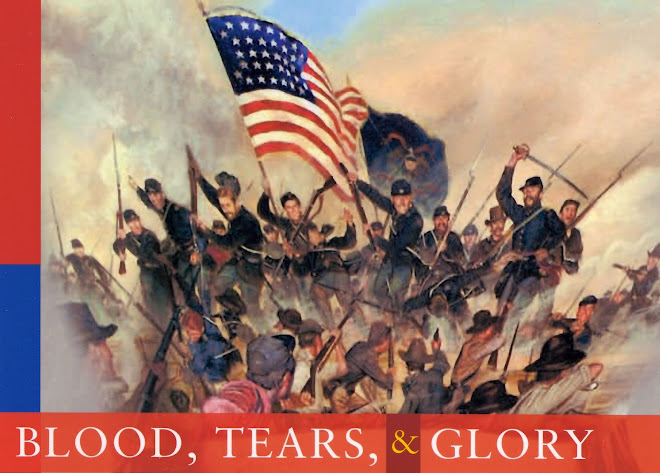
And beyond the Mississippi…
Union forces east of the Mississippi are busy preparing for battles yet to come, but the war’s biggest battle west of the Mississippi begins this cold, misty morning in northern Arkansas. Confederate Maj. Gen. Earl Van Dorn, a battle-scarred, hard-bitten Indian fighter, has patched together an army of 16,000, including three regiments of Indians and has fighting on his mind.
Crying “I must have St. Louis—then Huzza!” Van Dorn hopes to blast through a Union army blocking his way, then invade Missouri. Most Confederate forces have been driven from Missouri, a “border state” which the Confederacy claims as one of its 13 members—although it will never officially leave the Union.
Standing in Van Dorn’s way is a smaller Union force (about 10,500 men) entrenched at Pea Ridge. It is commanded by Samuel R. Curtis, a less colorful soldier than Van Dorn but an able commander. Van Dorn has a plan: he divides his force into two columns, then sends them both on a long, roundabout maneuver intended to break Curtis’s supply lines and attack the Union rear from two directions. But the Confederates are in for a rude surprise: Curtis has simply turned his troops around so they are facing the Confederates. (Picture of battle above)
Attacking on the left, the Confederates are hurt badly, with artillery fire breaking up their three Indian regiments. Most of Curtis’s infantrymen are from Missouri, Illinois, and Indiana, but among his artillerists are two batteries from Ohio, the Second Independent Battery and the Fourth Independent. The Ohio artillerists play important roles during the two days of battle.
On the right, heavily outnumbered Union troops give ground slowly, concentrating the fighting around Elkhorn Tavern. It is here, tomorrow morning, that fighting will resume and decide the battle.
MEANWHILE, ON THE TENNESSEE RIVER: Steamboats carrying an attack force under the command of C. F. Smith chug up the river. The erstwhile commander, Maj. Gen. Ulysses S. Grant cools his heels at Fort Henry by order of Henry W. Halleck, commander of the department of the Missouri.
From Halleck grant has just received a telegram berating him for alleged failures: “Your neglect of repeated orders to report the strength of your command has created great dissatisfaction, & seriously interfered with military plans.” Grant replies immediately: “Every move I made was reported daily to your chief of staff….I have done my very best to obey orders, and to carry out the interests of the service. Believing sincerely that I must have enemies between you and myself who are trying to impair my usefulness, I respectfully ask to be relieved from further duty in the Dept.”
Grant’s invasion of Tennessee, with his swift capture of Forts Henry and Donelson, were so promising they made him America’s hero of the hour. Within days, his immediate superior has moved to disgrace him. What will become of Ulysses S. Grant?
ELSEWHERE IN THE CIVIL WAR: After months of going nowhere, Maj. Gen. George B. McClellan’s well-trained and equipped Army of the Potomac, gets moving, heading for Manassas, Virginia, about
In the Shenandoah Valley of Virginia, Union commander Nathaniel Banks’ advance units skirmish with Thomas J. “Stonewall” Jackson’s defenders. The only known causalities are three wounded on the Union side. Jackson is backpedaling for now, but will begin bamboozling the hapless Banks soon enough.
Across
IT’S COMING SOONER THAN YOU THINK: April 12, 2011—less than 3½ years from now!—will be the 150th anniversary of the outbreak of the Civil War. In 1861, April 12 was the day Confederates opened fire on Fort Sumter in Charleston Harbor.
Your suggestions, comments, and questions about this blog are always welcome. Address the author: Ohioan@bloodtearsandglory.com
For more information about the author and his newest book, please go to http://www.orangefrazer.com/btg



No comments:
Post a Comment